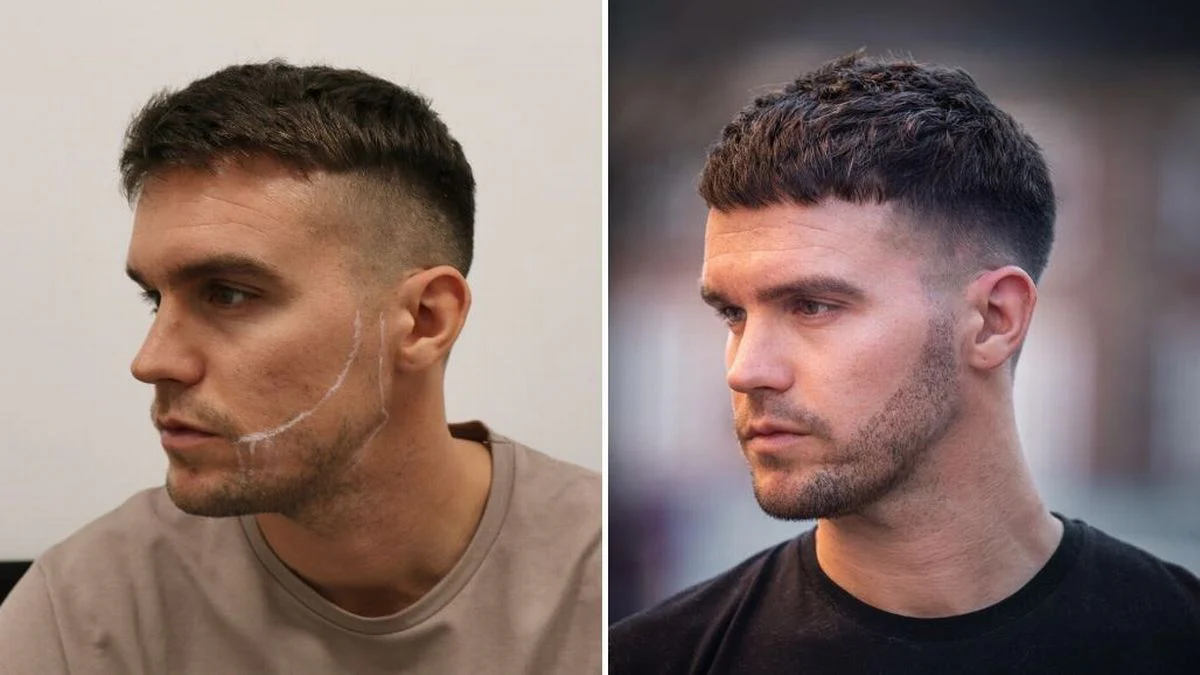A full, thick beard is a symbol of masculinity, style, and confidence. However, not everyone is naturally blessed with dense facial hair. Whether it’s genetics, hormonal imbalances, or past shaving habits, many men struggle with patchy or thin beards. Fortunately, beard transplants have emerged as a revolutionary solution to achieve a naturally fuller beard.
In this comprehensive guide, we will explore everything you need to know about beard transplants, from the procedure and benefits to cost, aftercare, and natural alternatives.
What is a Beard Transplant?
A beard transplant is a cosmetic procedure that involves extracting hair follicles from one part of the body (usually the scalp) and implanting them into the beard area. The procedure helps men achieve a thicker and more evenly distributed beard.
Types of Beard Transplants
There are two primary techniques used for beard transplants:
-
FUE (Follicular Unit Extraction)
- Hair follicles are individually extracted from the donor area and implanted into the beard region.
- Minimally invasive with less scarring.
- Faster recovery time.
-
FUT (Follicular Unit Transplantation)
- A strip of skin with hair follicles is removed from the back of the scalp, and individual follicles are transplanted.
- Leaves a linear scar.
- Generally used for larger transplants.
Who is a Good Candidate for a Beard Transplant?
A beard transplant is ideal for men who:
- Have patchy or uneven beard growth.
- Have lost facial hair due to scarring or medical conditions.
- Want to enhance their beard shape and density.
- Have sufficient donor hair (usually from the scalp).
Benefits of a Beard Transplant
- Permanent and Natural-Looking Results: The transplanted hair grows naturally like normal facial hair.
- Customizable Beard Shape: You can design your beard according to your preferred style.
- Boosts Confidence: A fuller beard enhances masculinity and self-esteem.
- Low Maintenance: Once healed, the beard requires no special care apart from regular grooming.
Beard Transplant Procedure: Step-by-Step
1. Consultation
A surgeon assesses your hair growth, donor area, and overall health to determine if you are a good candidate.
2. Preparation
- The donor area (usually the back of the scalp) is shaved.
- Local anesthesia is applied to minimize discomfort.
3. Extraction of Hair Follicles
- Using the FUE or FUT technique, hair follicles are carefully extracted.
- The process can take several hours, depending on the number of grafts required.
4. Implantation of Hair Follicles
- Small incisions are made in the beard area where the follicles will be placed.
- Each follicle is carefully implanted to mimic natural beard growth.
5. Recovery and Aftercare
- Initial redness and swelling subside within a few days.
- Tiny scabs form and fall off naturally.
- New hair growth begins within a few months.
Beard Transplant Cost
The cost of a beard transplant varies based on factors like location, clinic reputation, and the number of grafts needed.
Average Cost by Region:
- UK: £3,000 – £7,000
- USA: $5,000 – $15,000
- Turkey (Popular for Medical Tourism): $1,500 – $3,500
Beard Transplant Aftercare Tips
- Avoid touching or scratching the transplanted area.
- Sleep with your head elevated for the first few nights.
- Avoid smoking and alcohol, as they can slow down healing.
- Refrain from shaving for at least two weeks.
- Follow your surgeon’s post-operative instructions for the best results.
Alternatives to a Beard Transplant
If you’re not ready for surgery, here are some natural ways to promote beard growth:
1. Minoxidil (Rogaine)
- A topical solution that stimulates hair growth.
- Must be used consistently for results.
2. Biotin and Supplements
- Biotin, Vitamin D, and Zinc support hair growth.
- Helps strengthen existing facial hair.
3. Microneedling
- Involves using a derma roller to stimulate hair follicles.
- Enhances absorption of beard growth serums.
4. Proper Diet & Lifestyle
- A protein-rich diet boosts hair growth.
- Reducing stress can improve hair health.
Frequently Asked Questions (FAQs)
1. Does a Beard Transplant Hurt?
The procedure is performed under local anesthesia, so you won’t feel pain. Mild discomfort may occur during recovery.
2. How Long Does It Take to See Full Results?
You can expect noticeable growth within 3-6 months, with full results appearing after 12 months.
3. Can I Shave My Beard After a Transplant?
You should wait at least two weeks before shaving to allow the transplanted follicles to settle.
4. Are There Any Side Effects?
Common side effects include mild swelling, redness, and temporary shedding of transplanted hair (shock loss).
5. Is a Beard Transplant Permanent?
Yes, the transplanted hair is permanent and will grow just like normal beard hair.
Final Thoughts
A beard transplant is an effective and permanent solution for men who struggle with patchy or thin facial hair. With advancements in FUE and FUT techniques, achieving a natural, fuller beard is now easier than ever.
If you’re considering a beard transplant, consult a qualified surgeon, understand the procedure, and follow proper aftercare for the best results.
Looking for a trusted clinic? Contact us today for a consultation and take the first step toward your dream beard!

